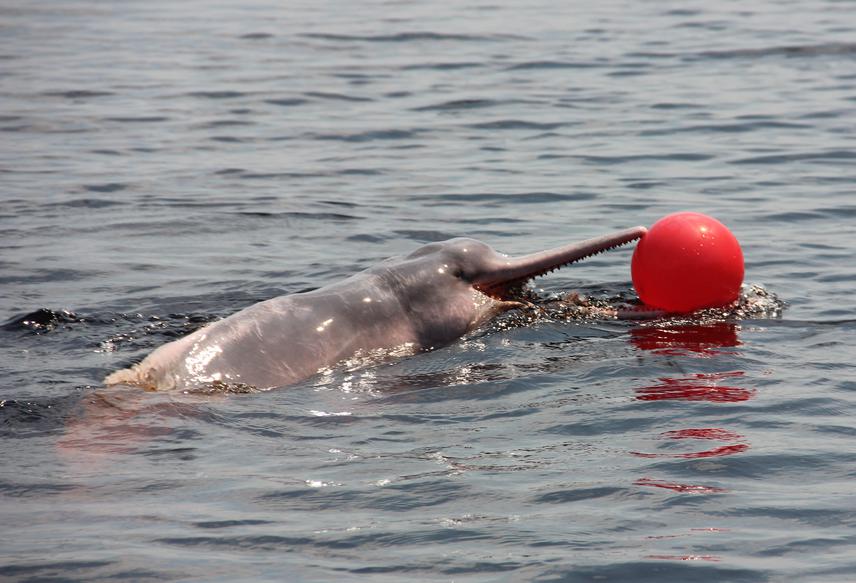Angelica Cristina Gouveia Nunes
I will assess behavioural responses of the Amazon river dolphins to the impacts of Ecotourism through behavioural and acoustic monitoring

Dolphins having fun with the ball.
The boto or Amazon River dolphin (Inia geoffrensis) widely distributed in the Amazon Rivers. These dolphins are usually solitary animals and are rarely seen in cohesive groups with more than three individuals. But larger aggregations can form due to feeding, resting, or courtship and mating purposes. They are the largest river dolphins and are one of the most sexually dimorphic of all cetaceans (with males 16% longer than females and 55% heavier).
The botos face serious threats throughout its life range. Recently, commercial tourism activity focusing on in-water interactions with these dolphins has grown in Amazonas state, north of Brazil. This activity occurs in jungle lodges and floating riverside restaurants located in areas of environmental preservation. The possible risks of this activity are not clear and there is a pressing need to understand the impacts of continuous exposure to human contact on the behaviour of this wild animal and long-term consequences at a population level.
In conditioned aggregations only males are observed. The adult males of this species feature evident intraspecific aggressive behaviour due to resources competition, which can be increased through food reinforcement. The possible effects of this Ecotourism activities on the behaviour of wild Amazon River dolphins can be measured through the number of aggressive exhibitions and sound types that indicate stress.
To gather behaviour data, I will use two techniques: scan sampling, to collect data focusing on group’s behaviour; and focal-animal sampling to gather data on individual behaviour. These two techniques provide combined pieces of information about group activity and intra-individual variations. The acoustic data will be collected using underwater hydrophones that are going to be connected on a recorder and a video camera.
The use of acoustic signals to determine with better precision the levels of aggressive behaviour showed by these animals while and after interaction with tourists will help to precisely determine which stimuli trigger aggression on these animals.
Dolphins habituated to receive food reinforcement for touristic purposes increase intraspecific aggressive exhibitions and change habitat use and foraging behaviour, remaining most of the time near the feeding sites. Understanding how botos respond to this anthropogenic stimulus will help control the ecotourism activity and prevent any damage to the animal and drastic influences at a population level, like changes in home range size, habitat use and foraging behaviour.